APC 2014 Annual Report Download - page 47
Download and view the complete annual report
Please find page 47 of the 2014 APC annual report below. You can navigate through the pages in the report by either clicking on the pages listed below, or by using the keyword search tool below to find specific information within the annual report.-
 1
1 -
 2
2 -
 3
3 -
 4
4 -
 5
5 -
 6
6 -
 7
7 -
 8
8 -
 9
9 -
 10
10 -
 11
11 -
 12
12 -
 13
13 -
 14
14 -
 15
15 -
 16
16 -
 17
17 -
 18
18 -
 19
19 -
 20
20 -
 21
21 -
 22
22 -
 23
23 -
 24
24 -
 25
25 -
 26
26 -
 27
27 -
 28
28 -
 29
29 -
 30
30 -
 31
31 -
 32
32 -
 33
33 -
 34
34 -
 35
35 -
 36
36 -
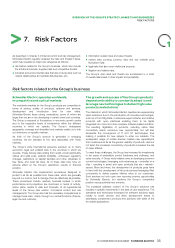 37
37 -
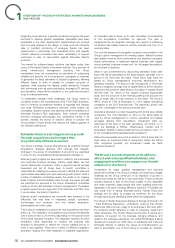 38
38 -
 39
39 -
 40
40 -
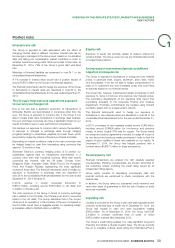 41
41 -
 42
42 -
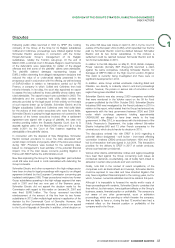 43
43 -
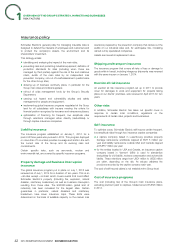 44
44 -
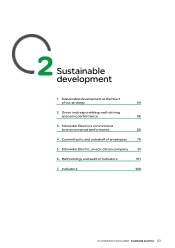 45
45 -
 46
46 -
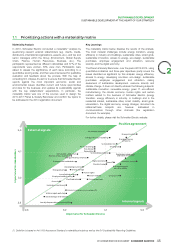 47
47 -
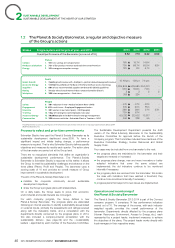 48
48 -
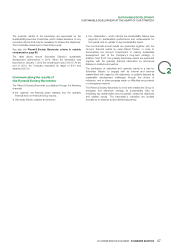 49
49 -
 50
50 -
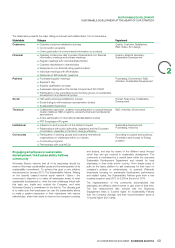 51
51 -
 52
52 -
 53
53 -
 54
54 -
 55
55 -
 56
56 -
 57
57 -
 58
58 -
 59
59 -
 60
60 -
 61
61 -
 62
62 -
 63
63 -
 64
64 -
 65
65 -
 66
66 -
 67
67 -
 68
68 -
 69
69 -
 70
70 -
 71
71 -
 72
72 -
 73
73 -
 74
74 -
 75
75 -
 76
76 -
 77
77 -
 78
78 -
 79
79 -
 80
80 -
 81
81 -
 82
82 -
 83
83 -
 84
84 -
 85
85 -
 86
86 -
 87
87 -
 88
88 -
 89
89 -
 90
90 -
 91
91 -
 92
92 -
 93
93 -
 94
94 -
 95
95 -
 96
96 -
 97
97 -
 98
98 -
 99
99 -
 100
100 -
 101
101 -
 102
102 -
 103
103 -
 104
104 -
 105
105 -
 106
106 -
 107
107 -
 108
108 -
 109
109 -
 110
110 -
 111
111 -
 112
112 -
 113
113 -
 114
114 -
 115
115 -
 116
116 -
 117
117 -
 118
118 -
 119
119 -
 120
120 -
 121
121 -
 122
122 -
 123
123 -
 124
124 -
 125
125 -
 126
126 -
 127
127 -
 128
128 -
 129
129 -
 130
130 -
 131
131 -
 132
132 -
 133
133 -
 134
134 -
 135
135 -
 136
136 -
 137
137 -
 138
138 -
 139
139 -
 140
140 -
 141
141 -
 142
142 -
 143
143 -
 144
144 -
 145
145 -
 146
146 -
 147
147 -
 148
148 -
 149
149 -
 150
150 -
 151
151 -
 152
152 -
 153
153 -
 154
154 -
 155
155 -
 156
156 -
 157
157 -
 158
158 -
 159
159 -
 160
160 -
 161
161 -
 162
162 -
 163
163 -
 164
164 -
 165
165 -
 166
166 -
 167
167 -
 168
168 -
 169
169 -
 170
170 -
 171
171 -
 172
172 -
 173
173 -
 174
174 -
 175
175 -
 176
176 -
 177
177 -
 178
178 -
 179
179 -
 180
180 -
 181
181 -
 182
182 -
 183
183 -
 184
184 -
 185
185 -
 186
186 -
 187
187 -
 188
188 -
 189
189 -
 190
190 -
 191
191 -
 192
192 -
 193
193 -
 194
194 -
 195
195 -
 196
196 -
 197
197 -
 198
198 -
 199
199 -
 200
200 -
 201
201 -
 202
202 -
 203
203 -
 204
204 -
 205
205 -
 206
206 -
 207
207 -
 208
208 -
 209
209 -
 210
210 -
 211
211 -
 212
212 -
 213
213 -
 214
214 -
 215
215 -
 216
216 -
 217
217 -
 218
218 -
 219
219 -
 220
220 -
 221
221 -
 222
222 -
 223
223 -
 224
224 -
 225
225 -
 226
226 -
 227
227 -
 228
228 -
 229
229 -
 230
230 -
 231
231 -
 232
232 -
 233
233 -
 234
234 -
 235
235 -
 236
236 -
 237
237 -
 238
238 -
 239
239 -
 240
240 -
 241
241 -
 242
242 -
 243
243 -
 244
244 -
 245
245 -
 246
246 -
 247
247 -
 248
248 -
 249
249 -
 250
250 -
 251
251 -
 252
252 -
 253
253 -
 254
254 -
 255
255 -
 256
256 -
 257
257 -
 258
258 -
 259
259 -
 260
260 -
 261
261 -
 262
262 -
 263
263 -
 264
264 -
 265
265 -
 266
266 -
 267
267 -
 268
268 -
 269
269 -
 270
270 -
 271
271 -
 272
272 -
 273
273 -
 274
274 -
 275
275 -
 276
276 -
 277
277 -
 278
278 -
 279
279 -
 280
280 -
 281
281 -
 282
282 -
 283
283 -
 284
284 -
 285
285 -
 286
286 -
 287
287 -
 288
288 -
 289
289 -
 290
290 -
 291
291 -
 292
292 -
 293
293 -
 294
294 -
 295
295 -
 296
296 -
 297
297 -
 298
298 -
 299
299 -
 300
300 -
 301
301 -
 302
302 -
 303
303 -
 304
304 -
 305
305 -
 306
306 -
 307
307 -
 308
308 -
 309
309 -
 310
310 -
 311
311 -
 312
312 -
 313
313 -
 314
314 -
 315
315 -
 316
316 -
 317
317 -
 318
318 -
 319
319 -
 320
320 -
 321
321 -
 322
322 -
 323
323 -
 324
324 -
 325
325 -
 326
326 -
 327
327 -
 328
328 -
 329
329 -
 330
330 -
 331
331 -
 332
332 -
 333
333 -
 334
334 -
 335
335 -
 336
336
 |
 |

SUSTAINABLE DEVELOPMENT
SUSTAINABLE DEVELOPMENT AT THE HEART OF OUR STRATEGY
Prioritizing actions with a materiality matrix
1.1
Materiality Analysis Key Learnings
In 2013, Schneider Electric conducted a materiality(1) analysis by The materiality matrix below displays the results of the analysis.
questioning relevant external stakeholders (e.g. clients, media, The most material challenges include energy transition, energy
distributors, international organizations, experts, etc.), and top and efficiency in industry and buildings, sustainable cities, smart grids,
senior managers within the Group (Environment, Global Supply sustainable innovation, access to energy, eco-design, sustainable
Chain, Finance, Human Resources, Business, etc.). The purchases, employee engagement and attraction, resource
participants represented six different nationalities and 37% of the scarcity, and the digital economy.
respondents were women, 63% were men. Participants were
2
The Planet & Society Barometer, over the period 2012-2014, using
asked to assess the significance of each issue according to a quantitative indicators and three-year objectives, partly covers the
quantitative scoring scale, and then were interviewed for qualitative issues identified as significant by this analysis: energy efficiency,
evaluation and feedback about the process. With the help of access to energy, developing countries, eco-design, sustainable
consulting firm Utopies, the aim is to ensure that Schneider Electric purchases, employee engagement and attraction, raising
reports against the most important economic, social and awareness of sustainable development, resource scarcity and
environmental issues; identifies current and future opportunities climate change. It does not directly address the following subjects:
and risks for the business; and updates its sustainability agenda sustainable innovation, renewable energy, green IT, eco-efficient
with the key stakeholders’ expectations. In particular, the manufacturing, the circular economy, human rights, and certain
materiality matrix was one of the sources used to design the matters related to the business of Schneider Electric (energy
2015-2017 Planet & Society Barometer and confirm the topics to transition, energy efficiency in industry, in buildings and in the
be addressed in the 2014 registration document. residential market, sustainable cities, smart mobility, smart grids,
urbanization, the digital economy, energy storage). document de
référenceThese subjects are, however, addressed in
communications through other channels (the registration
document, for example).
For further details, please visit the Schneider Electric website.
Importance for stakeholders
Importance for Schneider Electric
Internal signals
Positive agreement
External signals
2,3
2,3
3,2 4,1
3,2
4,1
5,0
5,0 Sustainable Innovation ●
Access to energy ●
Eco-Design ●
Renewables ●
Sustainable supply chain ●
Business ethical standards ●
Dialogue with stakeholders ●
Energy poverty ●● Energy storage
Sustainable branding ●
Employee health & safety ●
Eco-Production ●
Diversity ●
Hazardous substances ●
● Interests, compensation and benefits
Water usage & pollution ●
Socially Responsible Investment (SRI) ●
● Social dialogue and relations
Developing countries ●
● Human rights
● Circular economy
● Smart mobility
Energy efficiency in homes ●
Sustainable purchases ●
Digital economy ●
Climate change ●
Energy efficiency in buildings ●
Sustainable cities ●
Smart grids ●
Resource scarcity ●
Employee engagement
and talent attraction
Green IT ●
●
Urbanization ●
●
Energy efficiency
in industry
Energy transition ●
●
Raising awareness
on sustainability
Definition is based on AA 1000 Assurance Standard’s materiality principle as well as the G4 Sustainability Reporting Guidelines.(1)
45
2014 REGISTRATION DOCUMENT SCHNEIDER ELECTRIC
